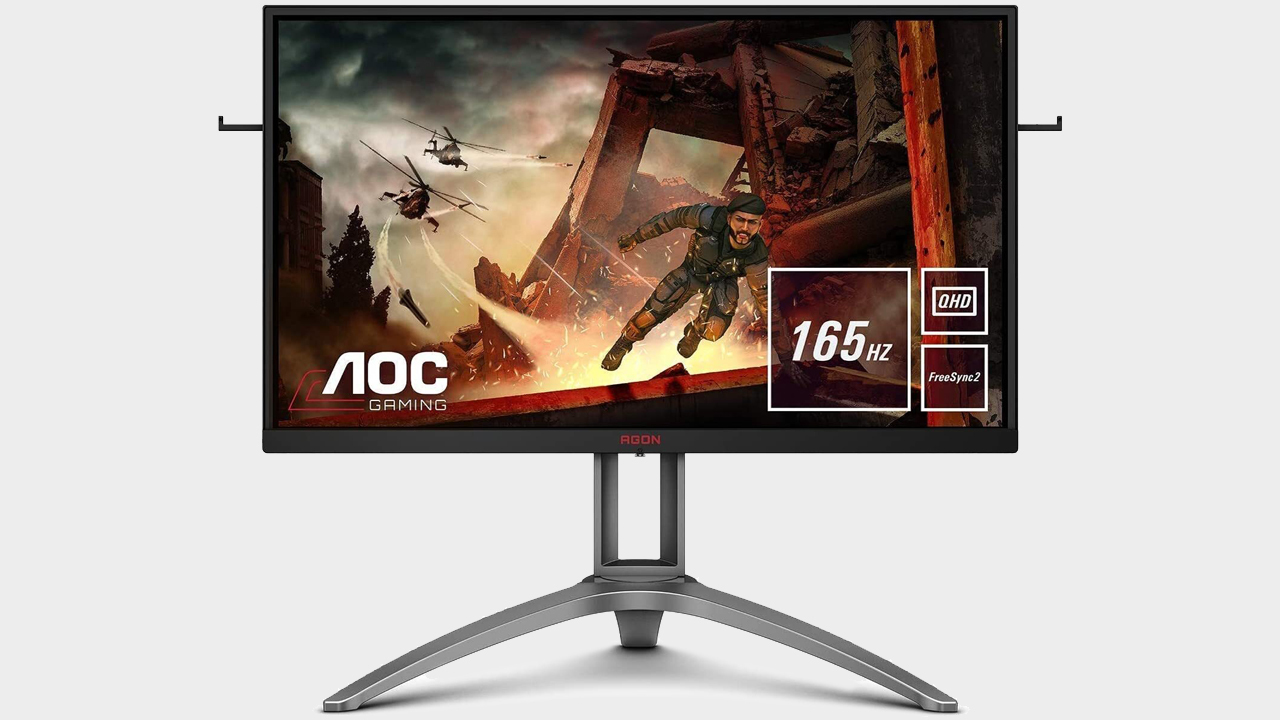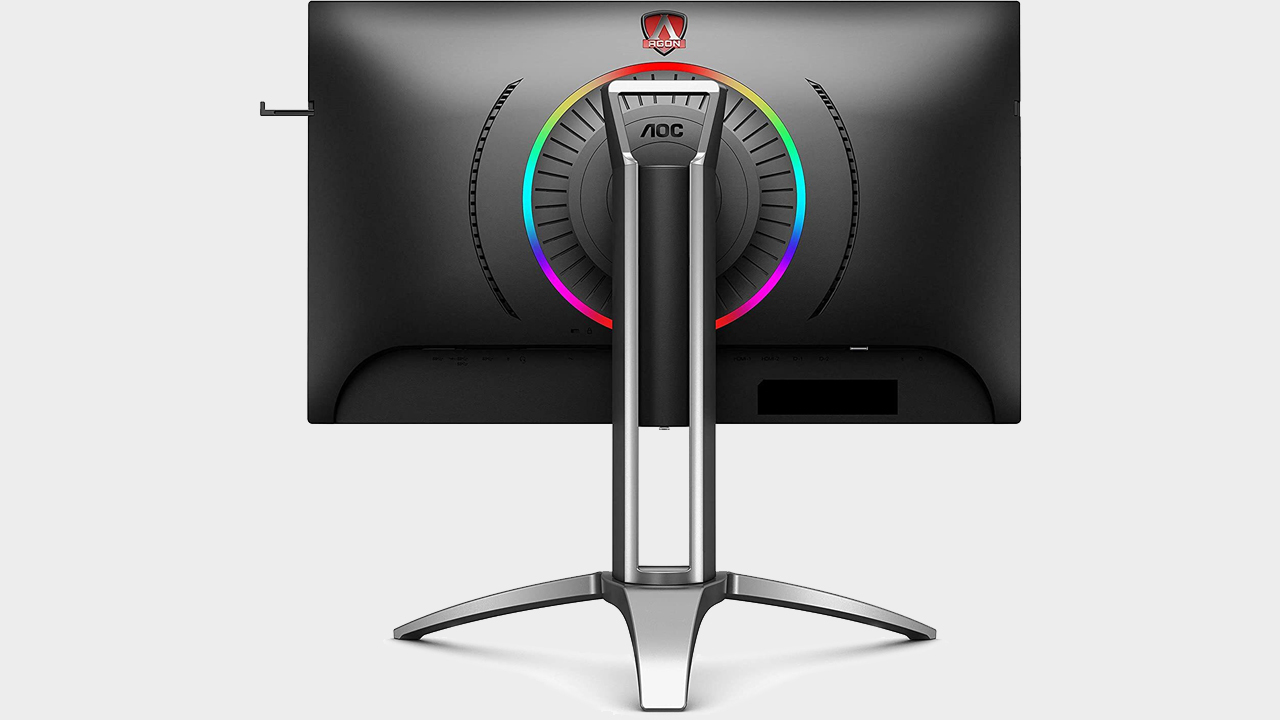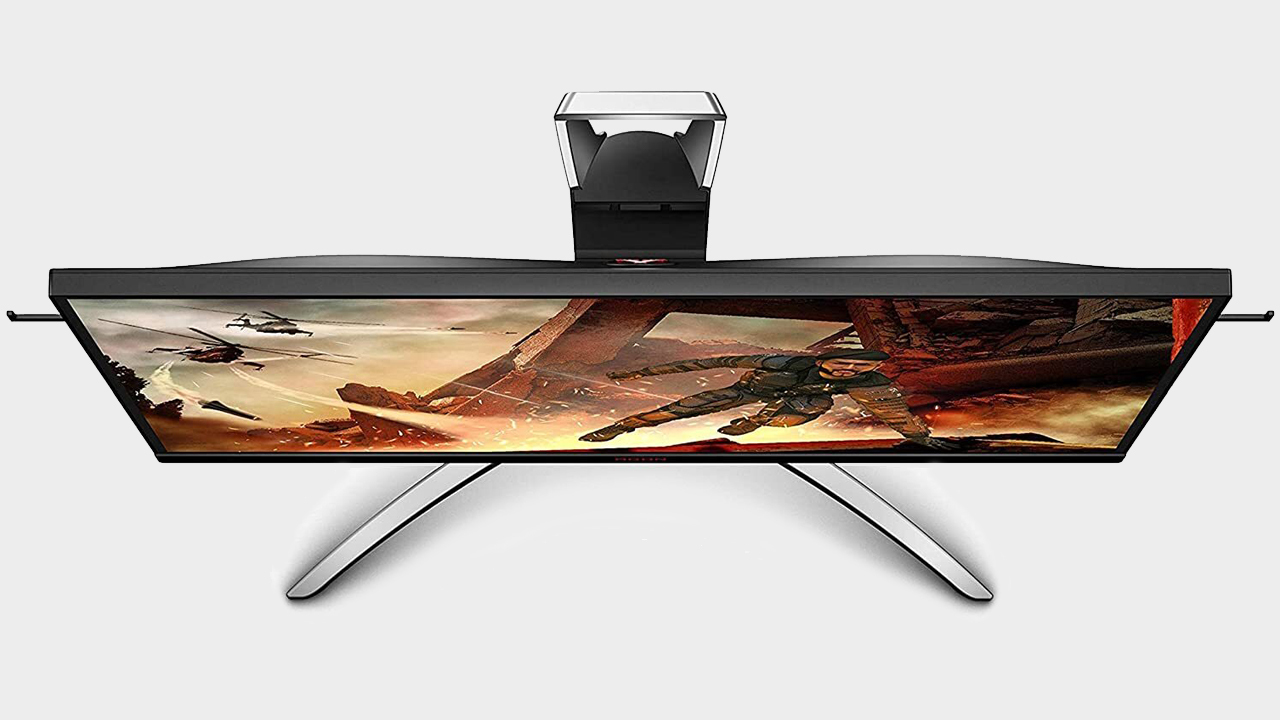GamesRadar+ Verdict
A terrific monitor that's all about speed. If you've got a machine to harness the 165Hz refresh rate, then the AG273QX is a great choice of display.
Pros
- +
Blistering screen speeds
- +
Wonderfully bright and vivid pictures
- +
Decent pre-sets
- +
Good picture quality
- +
Good value
Cons
- -
Massive, intrusive stand
- -
Contrasts are just OK in darker games
Why you can trust GamesRadar+
With 1440p still being the sweet spot for PC gaming, the arrival of the AOC Agon AG273QX monitor on my desk is a welcome sight. Coming in at around £450, this is a 27-inch, QHD, FreeSync 2, VA panel with blistering speeds that include a 165Hz refresh rate and 1ms response time. That's a recipe for success, particularly with speedy shooters and esports in mind - but does it stop at being a success in only those games, or are there more strings to its bow?
As a quick introductory note, this model is unfortunately not available in the US yet. It might well come to that side of the pond, but for the moment this is an EU-only model. In the US, your closest available AOC match would probably be the AOC C27G2.
Features

While the stand and RGB lighting on the screen's rear are features in themselves, there is also one final design-related titbit: a little plug-in hub. This is a neat way to access menus and presets without having to mess about with the screen's controls, if you don't mind another box on your desk and have the real estate. It's fun and largely a net gain in terms of user experience and saves the effort of fiddling around with onboard buttons.
Having said that, though, using the onboard controls is easy and you can change pre-sets by a mere flick of the stick. Those pre-sets are largely good, too - they apply themselves very aptly to a range of games and I was happy sticking to them, on the whole.
Complementing the speedy stats we are used to seeing in AOC monitors, the colour range, DCI-P3 numbers, and HDR of the panel are worthy of a mention too. They help to elevate the overall quality of the monitor.
In other news, the AG273QX is alleged to have a DCI-P3 of around or near-90%, which is what a panel really needs to go into the premium, heavy-hitting reaches of the spectrum. Team this with the good HDR 400 certification (which, while not being able to match the levels found in the best gaming TVs, is a solid inclusion), and it really has the makings of a great monitor for colour.
It all goes to show that you don't have to have just the biggest and best numbers to get a quality end-product.
Design
The shape, form, and style of the monitor is a mix of subtlety in the panel, but also very AOC-style design in the stand. The panel itself is set in slim bezels and is really quite sleek in its own right. And it's got some sweet RGB lighting on the back in the form of a stylish circle, as well. Yes, we know that you won't be able to see it, but you'll appreciate the glow against an adjacent wall or the effect of it when you're in low light.

I find the stand and legs a bit chunky, however. While it's sometimes fun to have design statements from monitors, this one just takes up too much desk-space for my liking. The tri-legged stand is sprawling and spider-y in a way that is beyond necessary for stability - form has not followed function here. Thus, this is a word of warning for those on smaller desks, or space-efficient setups.
Still, and beyond the literal physical qualities, the panel can be adjusted very easily. I had to do this out of necessity, so can confirm that there are ways of mitigating those sprawling legs.
Performance
The AG273QX's features immediately combine to delight the eyes upon testing. Particularly (and you'll see I mention it a few times) when there's any sort of fast movement in games.

Proving this first and foremost is how the monitor performs in Apex Legends: in short, it's a treat. The blistering speeds make the first-person shooter an exhilarating play, and one which is incredibly enjoyable with the monitor making the most of its 165Hz refresh rate. The camera shifts seamlessly, and gameplay is silky smooth. Basically, the monitor is primed for this type of game (note: you can get 144Hz through the HDMI but not the monitor's glorious max - and why wouldn't you want to get that extra 21Hz? You'll have to use DP or the USB-C connection for that.)
Metro Exodus is sadly a different affair, as there is a noticeable bit of shine on the greys and blacks of darker pictures (the contrasts aren't quite as nice as the game demands, either). However, as soon as you surface from the Metro or go in some more well-lit environments, the AG273QX's quality in colour does come back with a punch.

Elsewhere, the vast expanse of the Wild West in Red Dead Redemption 2 is of a good to great quality overall; the vistas and landscape features on show were presented beautifully, despite there being some slight light-source blurring when there was a darker environment. The same landscape-picture qualities occur in The Division 2, and it's presented equally brilliantly.
However, there was a particular standout - and it is here that we come full circle to movement again. Every encounter, fast camera-movement, and posture change in Division 2's ruined Washington D.C. are gloriously smooth and unparalleled.
All in, I have seen some slightly sharper pictures upon really close interrogation, but what this AOC monitor offers in way of clarity and sharpness, combined with its other characteristics of speed and colour, means you have a tremendous mix. The resulting image is really very good, all things considered - and that's what matters, going beyond the numbers.
A mild criticism I have is that it does bright colours slightly better than the darkest shades and blacks. What's more, its contrasts are just fine. But nothing is bad here. And no matter what you play, any movement on this panel is lovely; even scrolling through spreadsheets and down documents is easy on the eye and a joy to behold, especially on the roomy 27-inch 1440p display. Much like a lot of great modern monitors, having a pair of these for work and play would be ideal if you play those faster games.
Overall - should you buy it?
If you're looking for a 1440p, blisteringly-fast monitor from a quality and reliable - if maybe underrated - maker, then this might be for you. All in, it's built for speed and pace. Ultimately, that means esports-y games and fast shooters. If you're primarily a campaign or story-mode player, though? I think there are some better choices for you. Some of the best 4K monitors for gaming, for example.
As such, this is for Call of Duty players, competitive Apex players, and those who value movement and pace over other specs. And, as the cherry on top of this cake, it complements Nvidia graphics cards well; indeed, it's one of the best G-Sync compatible FreeSync monitors we've seen.
Small quibbles about its design and handling of darker shades are pretty easy to overlook too, so this is still one of the best speedster monitors I've tested.
One last note - as a reminder, given its only-European availability right now, US readers can still use this as a point of reference. Your best, similar AOC option is likely to be the C27G2.
Rob is the Deputy Editor of sister site, TechRadar Gaming, and has been in the games and tech industry for years. Prior to a recent stint as Gaming Editor at WePC, Rob was the Commissioning Editor for Hardware at GamesRadar+, and was on the hardware team for more than four years, since its inception in late 2018. He is also a writer on games and has had work published over the last six years or so at the likes of Eurogamer, RPS, PCGN, and more. He is also a qualified landscape and garden designer, so does that in his spare time, while he is also an expert on the virtual landscapes and environments of games and loves to write about them too, including in an upcoming book on the topic!




